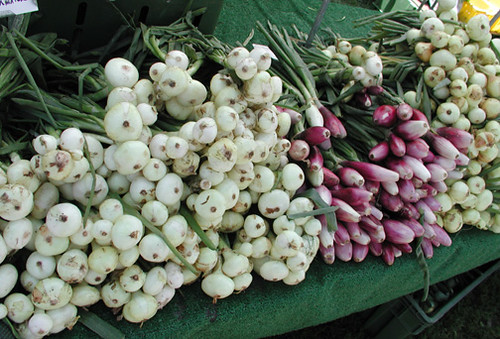Long, long overdue. The ideal of the New Deal farm subsidy program has been perverted for far too long. There should be caps on the size of farms that are covered: factory farms should not be eligible. And why exclude vegetable farmers? I think the US has more than enough corn, soy, rice, wheat and cotton planted.
The Debate Over Subsidizing Snacks - New York Times:
Increasingly, people are blaming the farm bill, and the longstanding agriculture policy it embodies, for some of the problems afflicting the country: the growth in obesity, the increase in food poisonings, and the disappearance of the family farm. Payments for farmers were started in the 1930s during the Depression to help save family farms; now the program costs billions and benefits about one-third of the nation’s farmers.
Changes in the farm bill are being supported by the Bush administration and an unusual alliance that includes the American Heart Association, Environmental Defense, Taxpayers for Common Sense and GMA/FPA, a food industry association. They agree that some subsidies should be cut and money spent instead to help fruit and vegetable growers, protect farmland, support small farmers and promote healthier eating.
For the first time, lobbyists for farm subsidies are facing off in the halls of Congress against hundreds of activists.

Michael Pollan's book, Omnivore's Dilemma, covered this same topic as well.
The article continues:
The 2002 farm bill provided $143.3 billion for nutrition programs like Food Stamps, $16.8 billion for conservation and $67.6 billion to subsidize the planting of certain crops. Almost all of the subsidies usually go to growers of five commodities: soybeans, corn, rice, wheat and cotton. Fruit and vegetable farmers do not get subsidies.Supporters say the subsidies have kept food affordable for Americans. Critics disagree and say the subsidies lead to cheap snack foods and soft drinks, made from ingredients like high fructose corn syrup and partially hydrogenated soybean oil. Meanwhile, the lack of subsidies for fruits and vegetables makes them expensive by comparison.
Between 1985 and 2000 the cost of fresh fruits and vegetables increased nearly 40 percent while the price of soft drinks decreased by almost 25 percent, adjusted for inflation, according to a study done by the Institute for Agriculture and Trade Policy, a group in Minneapolis set up to help save family farms and rural communities.
Health professionals say calories from those subsidized foods are partly responsible for the epidemic of childhood obesity and the increased incidence of diabetes.
One goal is helping to pay for new processing plants and slaughterhouses so that small farms could more easily market their products in their regions rather than sending them long distances. Many regional plants went out of business when the food industry became more concentrated.Another is setting up more farmers’ markets and helping farmers sell to nearby schools, hospitals and other institutions, and helping low-income older people buy from small farmers.
Other ideas include giving grants, loans and technical assistance to beginning, immigrant and minority farmers to start new farms or to keep small struggling farms in business, and providing money for farmers who want to convert to organic methods.
Spending money on researching the cultivation of fruits and vegetables would help farmers find more efficient ways to irrigate and fertilize crops and deal with pests while cutting back on pesticides. Greenhouses would also be built to extend growing seasons.
I wonder what the odds of such an intriguing bill passing through the exceedingly fine grinders of Congress and its lobbyists?
Some bills would expand farm and ranchland preservation programs, restore and protect more wetlands, grasslands and watersheds, and improve water quality by cutting back on pesticides and preventing nutrients and pesticides from washing off farms and into streams and lakes.Others include money for research and incentives for renewable energy on farms and ranches for wind power, biofuels from crops other than corn and for equipment to capture the methane from manure and turn it into an energy source.
this might be the first time I agree (at least at first glance) with the Bush Administration on anything:
The Bush administration, as well as many alliance members, wants to eliminate subsidy payments for farmers who have an adjusted gross income of more than $200,000 a year. And some in Congress want to limit subsidies entirely. House Speaker Nancy Pelosi has supported limits on subsidies in the past and some Congressional bills would prohibit any farmer from getting more than $200,000 a year in subsidies.According to the subsidy data from the Environmental Working Group, one giant cotton farm collected $2.95 million through crop subsidies in 2005, nearly as much money as the federal government spent on its primary research program for organic agriculture last year — $3 million.
